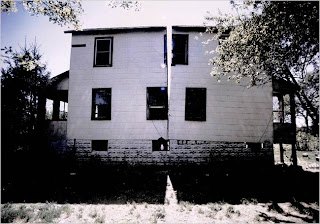Mary Tancred
26.10.2012
Elements of Design
- Line - portrait
- Shape - organic (figure) and geometric (frame)
- Form - all the elements combined create an illusion of form
- Colour - bold, intense, some tonal work
- Texture - smooth visual
- Space - positive space where there is the figure and frame and negative space in between the two.
Subject Matter
- Self portrait looking through a frame.
Materials
- Oil on canvas. These are traditional materials used for portraiture. Rembrandt, Van Gogh are two examples of famous artists who painted self portraits.
Presentation and Display
- Part of a series entitled, “Identity”, “Culture” and “Sub-Culture”. This particular painting is my “Sub-Culture” piece.
- Self portrait
- Figurative
- Art Deco
- Narrative
Codes
- female form
- narrative
- tatoos
- self disclosure
- intimacy
- contemporary hair colours
- feminism
- mother
- rich, intense, opulent
- symbolism of barbed wire, i.e., suffering, confinement
- symbolism of a frame, i.e., a story contained within
Contemporary ideas and events that may have influenced the creation of the work
- parenting
- ageing
- feminism
- individuality
- self disclosure
My biography
- role as mum
- societal pressure - what do you do?
- bananas in pyjamas land
- self discovery
Internationalism
- globalisation - women are not a homogeneous category; and while united as a gender, they are also divided by class, ethnicity, religion, age, ideology and sexual preferences
- Multiculturalism - it is not apparent in this particular piece as the focus is on the role as a mum, societal expectations, rules and norms.
Precedents
- Tamara de Lempika
Andromeda, c1927-28
Woman with Dove, 1931
- Nan Golding
One month after being battered, 1984
- Viviene Westwood
Electronic and Information Technologies
- presentation of the artwork on a blog to various audiences.
Audiences and Venues
- so far you are the audience
- potential for either gallery display or featured on my website, facebook etc.






.jpg)




.jpg)
















.jpg)



